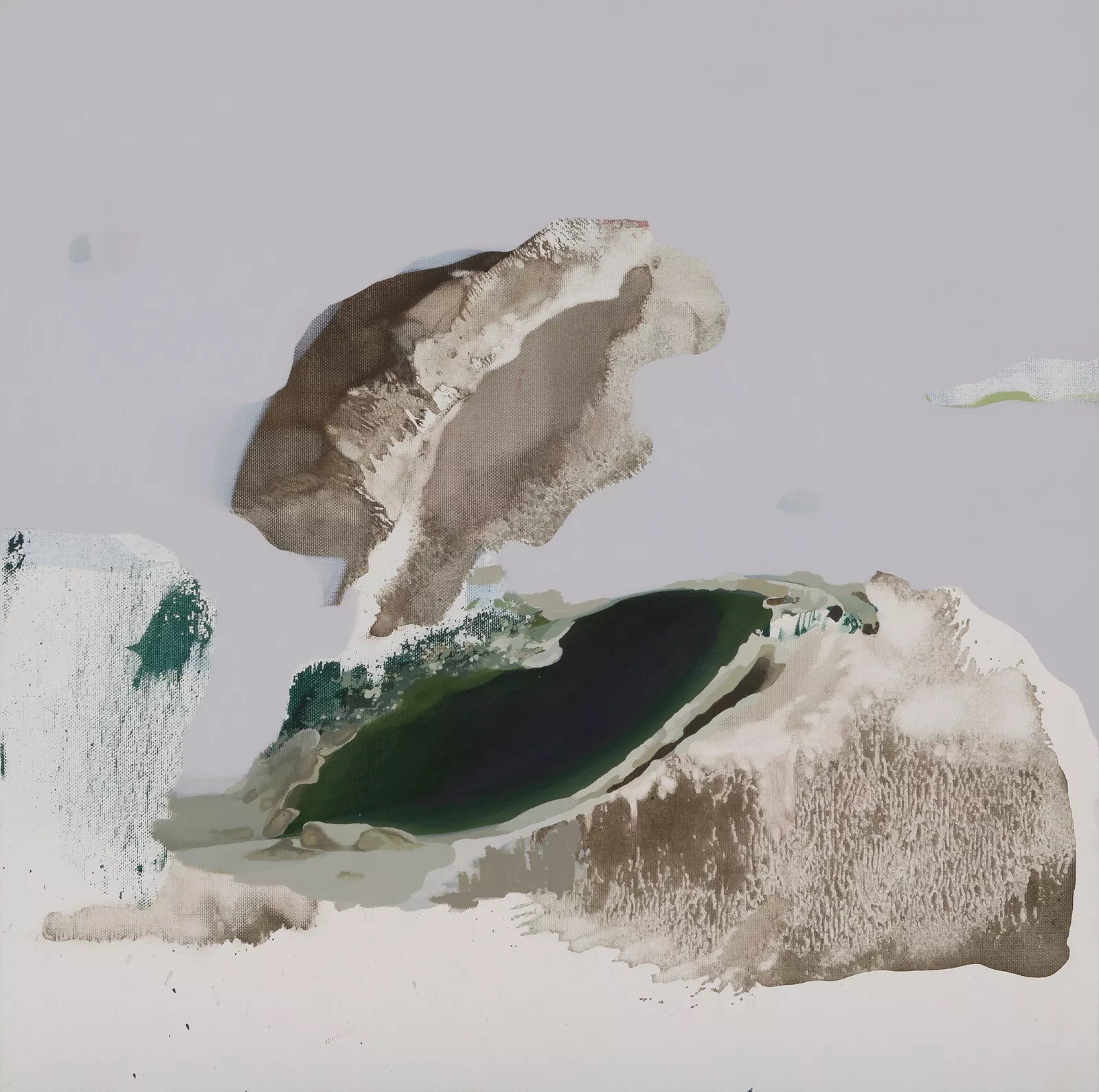Your currently viewing RAW Contemporary | View RAW Modern
Surrealism has always been about dislocation—dissolving the boundaries between waking and dreaming, the real and the unreal. Min Jung-Yeon (@minjungyeon23), a South Korean-born, Paris-based artist, inhabits this tension, building landscapes that shift under your gaze—fields of turbulence, soft ruptures, and elements at once colliding and balancing.
Born in 1979 in Gwangju, South Korea, Min grew up amid rapid modernisation, navigating the contrast between deep-rooted tradition and technological growth. After studying at Hongik University in Seoul, she moved to the École Nationale Supérieure des Beaux-Arts in Paris, immersing herself in the Western art canon while maintaining a strong connection to her Korean heritage. This fusion of influences shapes her work: ink and pencil meet contemporary abstraction, meditative brushstrokes coexist with chaotic energy.
In many ways, Surrealist landscapes have long served as thresholds—spaces where interior and exterior realities merge. Think of Yves Tanguy’s vast, horizonless expanses or Ithell Colquhoun’s luminous terrains, where geological forms undergo transformation. Min extends this tradition but shifts its coordinates. Her landscapes reflect the fluidity of East Asian aesthetics—the weight of empty space, nature as a continuous rhythm rather than a fractured force. Unlike the unsettling ruptures of classic Surrealism, her work embraces transformation as an organic state of being.
In Un Lac Profond (2024), a lake stretches out in muted tones, its surface still but charged with unseen movement. The acrylic on canvas piece (60 x 60 cm) operates like a memory. The image is dominated by sweeping, fluid marks of earthy browns and deep greens, with oscillating delicate and rough textures. What appears at first as a rock formation is suddenly ambiguous—part landscape, part atmospheric trace, part shadow of something unseen.

The work resists singular definition. Pigment pools and disperses, creating a sense of movement even in stillness. In places, the paint’s watery edges suggest evaporation, as if the terrain itself is dissolving into air. Min’s Surrealism offers a slow unraveling of space, where solidity is always on the verge ofbecoming something else.
In Les Discours des Trois Montagnes (2022), Min Jung-Yeon constructs a landscape in flux. Vertical drips of green and blue stretch downward like melting veils, suggesting sky or cascading water. Below, blackened rock formations rise from a pale yellow ground, their edges softened and fractured. These structures are neither entirely solid nor entirely fluid, evoking a geological process caught mid- transition—stone eroding into air, boundaries breaking apart.

Min’s layering of paint creates a sense of impermanence. The dark, monolithic forms seem ancient, yet their surfaces are unstable, appearing charred, weathered, or in the process of disintegration. Shadows seep into the pale ground, as if the earth itself is absorbing the figures. This interplay of light and darkness recalls Surrealist landscapes as psychological spaces, where perception shifts and solid ground is never certain. Yet, unlike Western Surrealism, where landscapes often disrupt reality, Min’s work follows a different rhythm. Her mountains do not fracture space but suggest an endless cycle of formation and erosion, presence and disappearance. They are not static monuments but active participants in a shifting terrain.
What Min Jung-Yeon offers isn’t just an image but an experience of perception shifting. Her landscapes resist resolution, holding you in the in-between—between form and dissolution, stillness and motion, clarity and obscurity. They ask you to slow down, to see the spaces between things, to notice where solidity gives way to air.